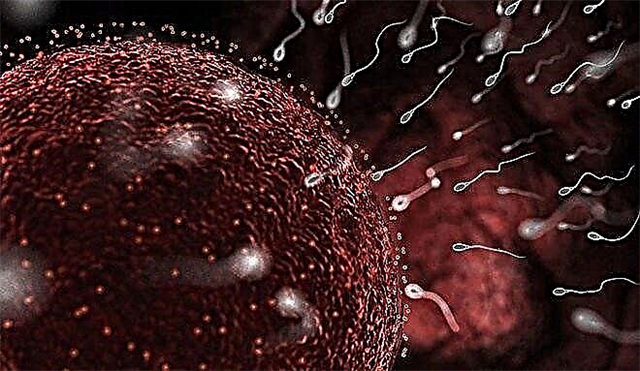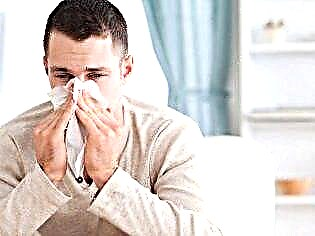
A healthy man and woman, not using contraception, can conceive a child in about six months. In about 30% of cases, pregnancy occurs within a year. But if planning is already taking longer, but the result is not, the spouses are advised to check their reproductive health.
In about 40% of cases, the reason for the absence of pregnancy lies in low sperm motility. How it is determined and whether it can be improved, we will tell in this material.

What it is?
Thanks to such a property as mobility, male reproductive cells can move along the female genital tract to the egg, which "waits" for them after leaving the follicle in the fallopian tube.
This path on a cellular scale is rather long and difficult. Only the most hardy and mobile sperm can reach their destination.
Mobility depends on many factors: on the density of the semen, on the morphological properties of the sperm itself. A cell with a normal structure is more likely to be fast and dexterous than a cell with tail or head deformities, and sperm neck thickness abnormalities. By itself, the tail of the sperm does not move; without external influence, the cell will not move anywhere.
The covering of the tail is a proton channel. As soon as the ejaculate enters the vagina, the environment in which, it should be noted, is quite aggressive, the channels open and protons are released. Their task is to reduce the acidity of the vaginal secretions. By itself, the ejection gives the reproductive cell a certain acceleration and makes the tail move.

The sperm cell “knows” for sure that he needs to swim to the place where the acidity is lower, that is, inside the uterus. A special system of acidity analyzers, which sperm have at their disposal, "prompts" the right direction.
It should be noted that proton channels were discovered quite recently. For quite a long time, doctors believed that the tail is mobile by itself, by nature.
It is possible to establish the mobility of the sex cells of a man only in laboratory conditions during a special analysis - spermogram. All spermatozoa, being inside the gonads, are completely immobile. When ejaculation occurs, they (under the influence of a special protein) are freed from the thick environment and gain freedom of movement.

The more active sperm a man has, the more likely he is to become a dad.
Sperm types and conception prognosis
The ability of male germ cells to move is assessed according to strict criteria. Depending on them, all sperm are divided into four large groups.
- Group A... These are the most active cells, best suited for the fertilization of a female egg. They only move straight ahead at speeds up to 25 micrometers per second. In the classification of physicians, they are called progressive or active-mobile.
- Group B... These are also quite mobile and active sperm, which differ from representatives of group A only in that their speed is slightly lower. However, they also move straight. Such sperm are also suitable for conception.
- Group C... Such germ cells do not move at all the way they need to for successful conception. They either move, staying in place, or "travel" along a circular path, or move along a broken line, in a zigzag. The classification classifies them as non-progressive and mobile. Conception with the participation of such cells is unlikely.
- Group D... The last group includes sperm cells that do not move at all. They are called non-progressive-immobile. The chances of conception with D sperm are nil.

A man's sperm is considered suitable for fertilization if it contains at least 25% of the cells of group A. If during the spermogram there are fewer such mobile and active cells, they are summed up with the cells of group B. It is quite enough for conception if the sperm of groups A and B add up to at least 50% of the total number of germ cells in the ejaculate.
The notorious human factor and laboratory errors are excluded, because it is not a person who counts, but powerful sperm analyzers, which produce a finished result with microscopic accuracy.
The less cell motility, the more difficult it is to get pregnant. The probability of conception is calculated depending on the exact proportions.
If the ejaculate contains 60% of the cells of group C, then the probability of spontaneous conception is about 3%. If the number of cells in group D exceeds 70%, natural conception becomes almost impossible.

In most laboratories, the number of sperm in groups C and D is not counted at all, limiting itself to the allocation of a percentage of A and B cells. In case of a deviation from the norm, a man is diagnosed with asthenozoospermia. This is one of the forms of male infertility and it definitely needs treatment.
Causes of inactivity
To establish the cause of the low mobility of male germ cells, the MAP test allows. It is by its results that one can judge the fertility of a particular man. It should be noted that sedentary and immobile sperm are present in all. The only question is their mass fraction.
In a man who is faced with sperm dyskinesia, the question naturally arises why this happened to him. The reasons that cause a decrease in the activity of germ cells are conventionally divided into three types:
- pathological, caused by diseases;
- external;
- natural (physiological).

The natural reasons for the decrease in the activity of male reproductive cells are temporary and do not need treatment. Most often, sperm become inactive and less active in the spring. During the day, the mobility of the germ cells is also not the same: in the morning, sperm are less active than in the evening. Much also depends on the frequency of intercourse or masturbation. If a man has an active sex life, the composition of his sperm is updated more often, and, therefore, sperm will be more active. Men who abstain for a long time cannot boast of motile and active sperm. These reasons are easy to correct, they are not considered pathological.
Pathological causes are most often associated with diseases of the reproductive system: prostatitis, varicocele. Often, the true cause of low mobility lies in bacteria, such as E. coli, if found in the ejaculate. Bacteria lead to agglutination (adhesion of cells to each other), as a result of which mobility is lost. The problem may lie in the vas deferens, especially if there is a blockage of the seminal vesicles.

Inflammatory processes of the male reproductive system almost always lead to a decrease in sperm activity. The most dangerous from this point of view is epididymitis. Inflammatory diseases of the epididymis directly affect the spermatozoa, which are "stored" in a certain part of this epididymis before ejaculation. Dangerous for male health and sexual infections, including ailments, the course of which is sometimes imperceptible: chlamydia, ureaplasma and the like.
Sperm motility can be reduced due to autoimmune processes. If there was an injury, even a minor one (for example, a blow to the groin during a fight), an immune process can start, during which antisperm antibodies will be produced, which will suppress and destroy living and active sperm, "confusing" them with foreign cells. Also, hormonal imbalances, problems with the thyroid gland, adrenal cortex, as well as excess weight can adversely affect.

Rarely enough, congenital pathologies are found in men, for example, the "9 + 0" syndrome, in which a pair of microtubules is initially absent at the genetic level in the tail of the sperm, as well as sperm DNA mutations. In most cases, with genetic pathologies, the sex cells are completely immobile, and the man is completely sterile. In this case, only artificial insemination of his wife using donor sperm can help him become a dad.
External reasons for a decrease in the activity of male sex cells most often lie in common male mistakes. If a representative of the stronger sex is very fond of visiting the bathhouse and basking in a hot bath for a long time, his testicles overheat, which leads to the appearance of a large number of sedentary or immobile spermatozoa.
Those who like to drive a car in a warm, electrically heated seat also run the risk of having problems conceiving. Overheating of the testicles also occurs at high temperatures, if, for example, a man is ill with the flu or SARS. After healing, it takes about three months for the sperm to renew its composition, and the dead cells are replaced by live and active ones.


Bad habits, smoking and alcohol, even in small quantities, but when taken systematically, have a destructive effect on the germ cells. Not only their mobility is impaired, but also morphology, which not only reduces the ability to fertilize, but also increases the likelihood of conceiving a child with chromosomal disorders.
Narcotics act on sperm in a similar way. Marijuana is famous for its paralyzing effect on the sperm flagellum. Therefore, an experienced smoker may have difficulty reproducing offspring.


Both antibiotics and anticonvulsants reduce sperm activity. Hormones have the most detrimental effect on them, it is for this reason that young and strong athletes are often infertile - an addiction to steroid hormones cannot pass without a trace for reproductive health.
Those who like to dine in fast food restaurants are also at risk for asthenozoospermia. Any fast food, soda, canned food contains a large amount of preservatives and dyes that destroy the structure of sperm cells. Negatively affects the composition of semen and the habit of drinking a lot of coffee.

Reduced sperm activity can be in men who work in hazardous industries, have constant or long-term contacts with heavy metal salts, varnishes and paints, radioactive radiation. Also asthenozoospermia "lurks" men who are very nervous, are in a state of chronic stress.
How to increase mobility
Timely and correct treatment will help increase the chances of conception. Fortunately, in most cases (both pathological and external), the mobility of germ cells can be restored or at least improved. Today, there are several ways to activate sperm.

Traditional medicine
With a slight decrease in mobility, doctors try not to prescribe serious therapy, limiting themselves to recommendations for correcting lifestyle and nutrition. Sometimes it is enough to eat normally for a month or two, avoiding fast food and alcohol, lead an active lifestyle, sleep at least 8 hours a day, change your "harmful" work for a safer one. Repeated spermogram (in most cases) shows a noticeable improvement, pregnancy occurs in the very near future.
As soon as a man eliminates the external negative influences that were listed above, his reproductive health will recover and the germ cells will become much more active.
To improve sperm motility, men are prescribed drugs to increase the intensity of spermatogenesis. These include vitamins A, E, C, D, zinc, selenium, iron, and folic acid. These drugs can be taken separately, or as part of a balanced and specially designed complex for men. Additionally, we recommend tablets and capsules, which are dietary supplements and antioxidants and have a positive effect on the composition of the ejaculate. These drugs include "Spermaktiv", "Spermaplant", "Profertil" and others.
If the reason for the inactivity of spermatozoa lies in an infection, a course of antibiotic treatment is first prescribed, followed by maintenance therapy with vitamins and means that allow to activate spermatogenesis. With varicocele, a surgical operation is performed, after which the cause of the pathology is considered eliminated, and the sperm composition improves within a month.
The most difficult to correct is autoimmune asthenozoospermia. A man sometimes needs long-term treatment with drugs that suppress the activity of the immune system. In some cases, the result cannot be achieved and this is an indication for the use of assisted reproductive technologies - ICSI, IVF.
It is impossible to cure the immobility of sperm of a genetic nature. It is also impossible to correct congenital malformations of the structure of the organs of the reproductive system. In this case, the couple is invited to resort to IVF with their own or donor sperm.

Folk remedies
Treatment with folk remedies does not replace the main treatment, but it can help to achieve a faster positive result. So, pumpkin juice on an empty stomach, beekeeping products, a decoction of rose hips, as well as a decoction of nine-strength will help a man to cause an increase in the mobility of germ cells.
You need to understand that folk remedies are good for correcting minor violations in the spermogram. If a man has only 8% active sperm, then no folk remedies will most likely help him. We need a thoughtful and serious approach in compliance with all the prescriptions and recommendations of the attending physician.
General recommendations
In the process of treatment, it is important for a man to lead an active lifestyle, but not to burden himself with excessive physical exertion. A light jog in the morning and evening will be beneficial, but lifting the bar or repairing in the garage with your own hands is better to postpone to a later time. Only an integrated approach, which includes changing food habits, and getting rid of bad habits, and taking vitamins, can have an effective effect.
Don't expect quick results. As you know, the cycle of spermatogenesis lasts about 3 months. It is best to find out if the sperm activity has been increased after this period. A repeated spermogram will help check whether the treatment has helped and, if necessary, the doctor, based on its results, will give new appointments.


A decrease in sperm activity is not a sentence. If the couple has patience and will consistently follow all the recommendations, they will definitely be able to cope with the problem.
For information on how to increase sperm motility, see the next video.



